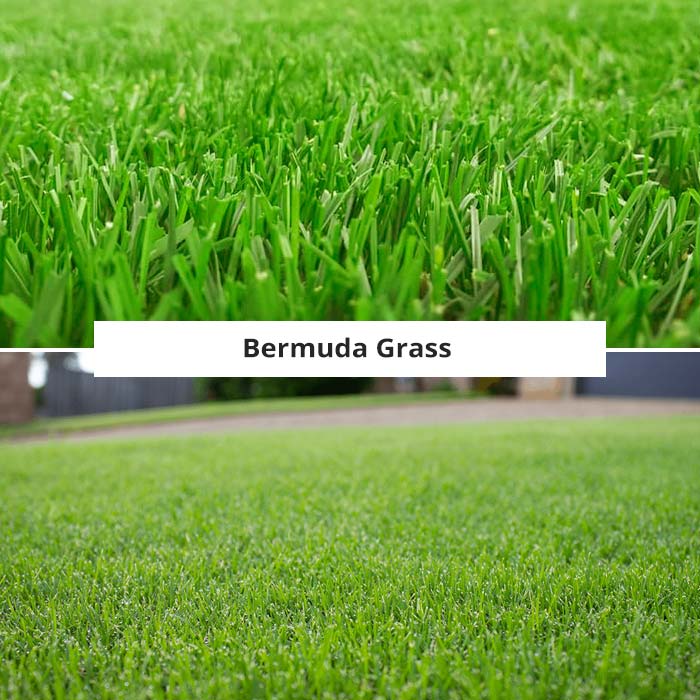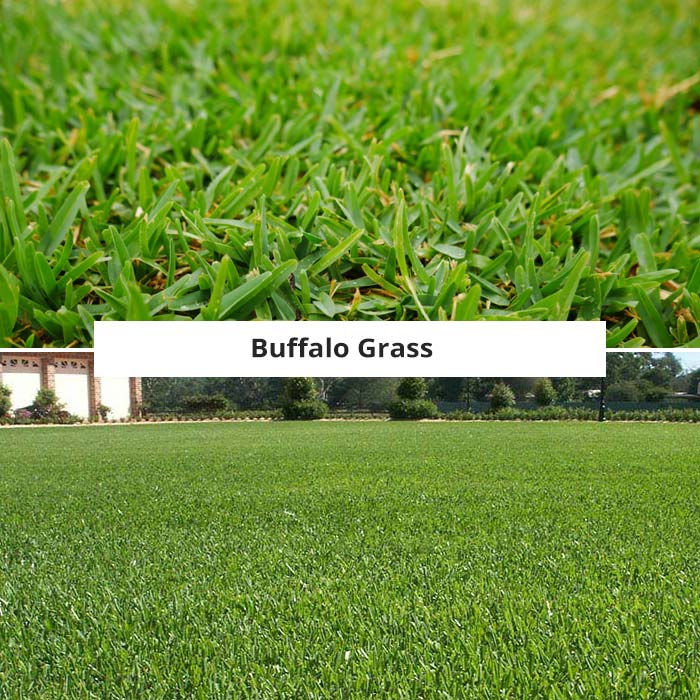Given the current climate conditions and water restrictions in Texas, it’s become imperative to find grass types that are resilient to intense heat and drought situations. Fortunately, there exists a selection of grasses that are specifically adapted to resist drought, tailored for exactly this need.
The best drought-resistant grass species for Texas are:
- St. Augustine
- Bermuda
- Buffalo
- Carpetgrass
However, before selecting any of these options, or others outside the list, it is crucial to consider how they fare.
What we cover
ToggleFeatures of drought-resistant grass species
The following are the key features of the drought-resistant grass for Texas on our list:
#1. St. Augustine
Botanical name: Stenotaphrum secundatum
Color: Light green
Mow height: 2 ½ – 4 Inches
Cost: $0.30 – $0.80
Root depth: 3 feet
Mowing frequency: 10 – 14 days
Temperature tolerance: Max 105° F
St Augustine is our top pick for Texas because of its classic light green appearance and tolerance to hot weather and drought. St Augustine is native to Central America so it is well suited to the weather conditions of Texas, being able to withstand the heat of 105° F on a regular basis without needing external input (watering).

Strengths
- Fast-growing and spreading.
- Thrives during hot temperatures and will go dormant when things are too hot.
- Low frequency of mowing required.
- Can plant with seed or sod
- Relatively cheap to plant and maintain
Weaknesses
- Doesn’t like cold weather
- Not very tolerant of lots of foot traffic
- Need fertilizing regularly to keep its green appearance
- Susceptible to pests and diseases such as chinch bugs and grey leaf spot
- Not good with too much shade
#2. Bermuda
Botanical name: Cynodon Dactylon
Color: Dark green
Mow height: 1 to 2 inches
Cost: $0.30 to $0.85
Root depth: Six feet
Mowing frequency: 5 to 7 days
Temperature tolerance: Max 110° F
Next on our list of drought-resistant grass for Texas is the Bermuda grass. Unlike the St. Augustine species, it has dark leaves, a fine texture, and is usually dense. While the former only needs moderate sunlight to thrive, Bermuda needs full sunlight to do well.
It is ideal for any environment and typically tries to remain green in color by overseeding itself with ryegrass, even in winter. Bermuda has several varieties, but Celebration and Texturf are the most popular.

Strengths
- Has a significant heat tolerance level of up to 110°F
- Not easily susceptible to disease
- Quickly grows and stabilizes in roots and shoots
- Does not need a lot of water after a drought, requiring only about an inch of water per week
- Tolerates foot traffic and quickly recovers
- Stays dormant after 50 days of drought and survives up to 4 weeks without dying
Weaknesses
- Requires frequent fertilization
- Needs to be constantly mowed
- Does not tolerate shade
#3. Buffalo
Botanical name: Bouteloua dactyloides
Color: Dark blue-green to bright green
Mow height: 1.5 to 4 inches
Cost: $10
Root depth: Six feet
Mowing frequency: 2 weeks
Temperature tolerance: 80° to 95° F
The Buffalo species has a fine texture and vibrant colors, ranging from bright green to dark blue-green. You can plant buffalo using seeds, plugs, or sod. So the one you choose will depend on how soon you want full lawn coverage. There are a few varieties, but Prestige, Prairie, and Density are the most popular for Texas weather.

Strengths
- Tolerates full sunlight
- A deep root system, up to six feet
- Needs minimal watering per week
- Low disease susceptibility
- Does not require frequent fertilization
Weaknesses
- Foot traffic tolerance is low
- Weed invasion is easy
- Low thickness
- Expensive by sod or seed
#4. Carpetgrass
Botanical name: Axonopus compressus, Axonopus fissifolius
Color: Yellowish green
Mow height: ¾ to 2 inches
Cost: Seed per pound costs $12 to $22
Root depth: 5 cm
Mowing frequency: 5 to 7 days
Temperature tolerance: 80° F
Carpetgrass holds up well in hot weather; that is why we chose it as part of our list. It has coarse leaves and grows well in lower altitudes where the grass is typically wet and remains healthy whether or not the weather is sunny or shady.
The grass looks great in any environment and usually stays green in any weather. If it gets water, it becomes even more lush than usual. You can find and plant them as sprigs or seeds.

Strengths
- Thrives on soil with low fertility and moderate acidity
- Moderate shade tolerance
- Becomes green and full when in wet soil
- Fits every environment, including golf courses
Weaknesses
- Low disease tolerance
- Needs fertilization
- Requires constant mowing
How drought-resistant grass species remain resilient
A drought-resistant grass can either be a cool-season or warm-season species. A cool-season species is that which thrives in spring and fall. It does not perform well in hot or humid weather, making it ideal for North Texas. A warm-season species do well in areas with hot summers and mild winters. It becomes dormant in hot weather and needs only a little water to revive itself afterward.
Drought-resistant grass is one with the capacity to withstand periods without water and not die. Only a few species can achieve this feat, and they work best for climates with typically dry spells or unstable weather. These types of grass usually remain resilient by being turgid, having deep roots, and going dormant when necessary.
Roots
Roots that extend deeper into the soil than usual mean the plant can reach the water below the surface. It helps such grass species stay standing and thriving for long periods. It helps to irrigate the soil once every week and do it long enough that the water penetrates deep into the soil. Irrigating too often may cause the roots to become shallow.
Turgidity
Turgidity, in this case, is the level of water pressure in the cells of a plant. For this type of grass to stay standing in dry weather, it reduces its cell size and closes pores in its leaf. That way, it does not quickly lose water retained in the roots.
Dormancy capacity
Once the root of a plant remains alive, it can revive itself even if the surface parts look dead. Drought-resistant grass becomes dormant as a way to protect its roots from dying so that it can stay alive for longer.
It may become brown, but it does not mean the grass is dead. When there is water, the grass comes alive again, regenerating from the rhizomes, colons, or crowns. A species’ dormancy capacity depends on its genetics and general health.
Conclusion
Getting suitable drought-resistant grass for Texas is easy, but getting the best one for your lawn or turf is entirely different. It is crucial to know how the soil fares and the prevalent weather before choosing between cool and warm-season grasses.
We have listed four of the finest species: St. Augustine, Bermuda, Buffalo, and Carpetgrass. However, contact a lawn care professional to determine which works best in your area.






